No products in the basket.
Art Travel
Graffiti: the basic evolution
Essential info for understanding graffiti and street art.
The world of Graffiti is a complex place. I recently had the privilege of walking the streets of London’s East End with an excellent tour guide and one of the things I appreciated most about the tour was the guide’s explanation of the evolution of the graffiti. His knowledgeability informed my understanding of what I was looking at and inspired me to delve deeper into this fascinating scene. Allow me to share my own distillation of useful tips and information for street art enthusiasts and travellers.
To better understand the graffiti language and slang please read my other post on Graffiti Lingo.
Please bear in mind that each graffiti artist follows their own, unique process in developing a signature style. In most cases, however, the process follows a few basic steps.
Not all graffiti artists graduate to a piece (short for masterpiece) An easy way for me to grasp the development is to consider how much risk/time it took to create a piece. Graffiti artists tend to gradually risk more and more and spend more time on their art as they become more cheeky with authority.
Also, bear in mind that I am ‘bencher’, a graffiti enthusiast, I don’t practice graffiti (yet), so if I have missed something please let me know in the comments below and I will be sure to add it.
The basic evolution of graffiti
STICKERS
Some street artists start with stickers, usually simple tagging or an adhesive sticker. This is a quick and easy way of getting your art out there.
After the artist has made all their stickers they hit the streets. The idea is to place them in as many high traffic areas as possible so people start recognising their signature or style.
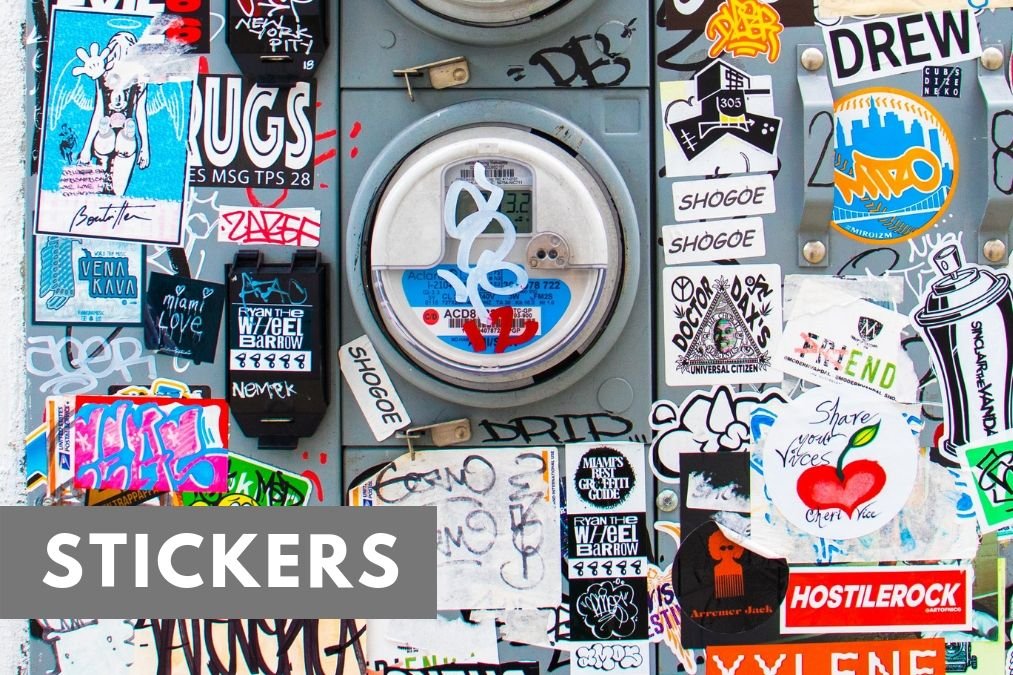
Why stickers? The risk is minimal. They are quick to slap on and leave, greatly reducing the risk of being caught. Youngsters can peel a sticker, rest it in the palm of their hands, and briskly walk past an object while slapping on their artwork.
Stickers started out as being hand-drawn but recently graffiti writers can have their signature word custom printed and mass-produced.
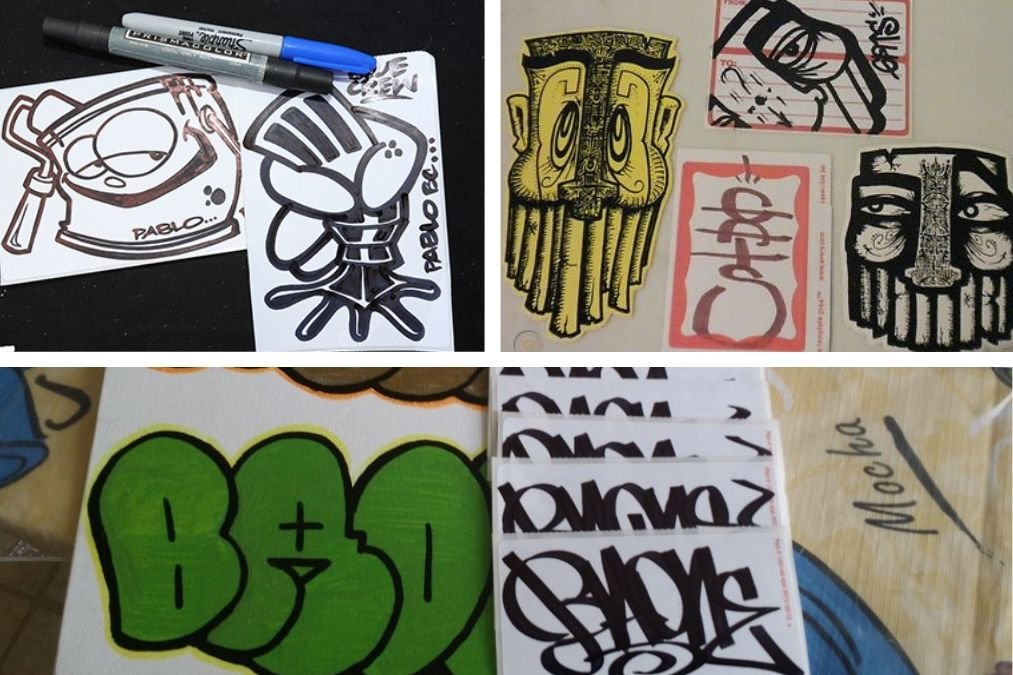
Hand-drawn graffiti stickers.
Not all graffiti artist starts with stickers. Some hit the streets with a spray can from the word go. As with any art form, however, it takes a lot of time and practises to get really good with spray paint.
#1 THE TAG
The Tag is the simplest form of graffiti. It is the backbone for basically all the other types of writing styles that we will be covering in this blog.
It can be characterised as using only lines to form a signature. A Tag can be done using a marker or a spray can. It can be seen as stylized writing of letters.
A Tag involves more risk and commitment than a sticker, even though, for a practised artist, the time it takes to make a tag is usually only a few seconds.
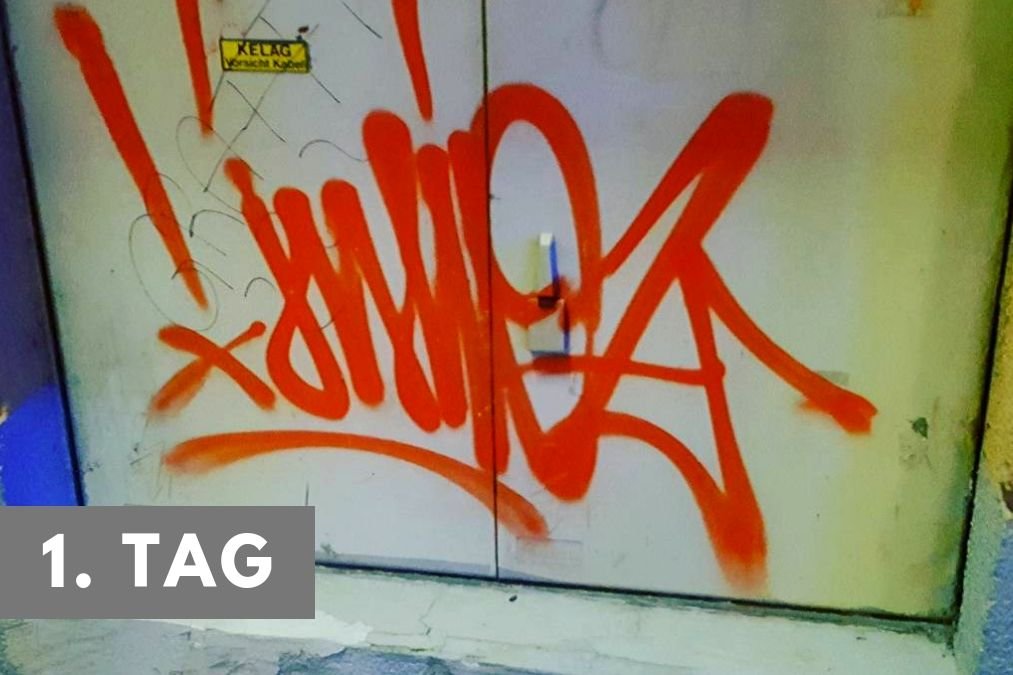
#2 THE HOLLOW
The Hollow is usually the next step, where the word is represented on a larger scale, with letters morphing to form bubbly shapes.
The Hollow is almost a kind of logo, a shortened version of the artist’s signature word, sometimes consisting of only a few letters of the artist’s name.
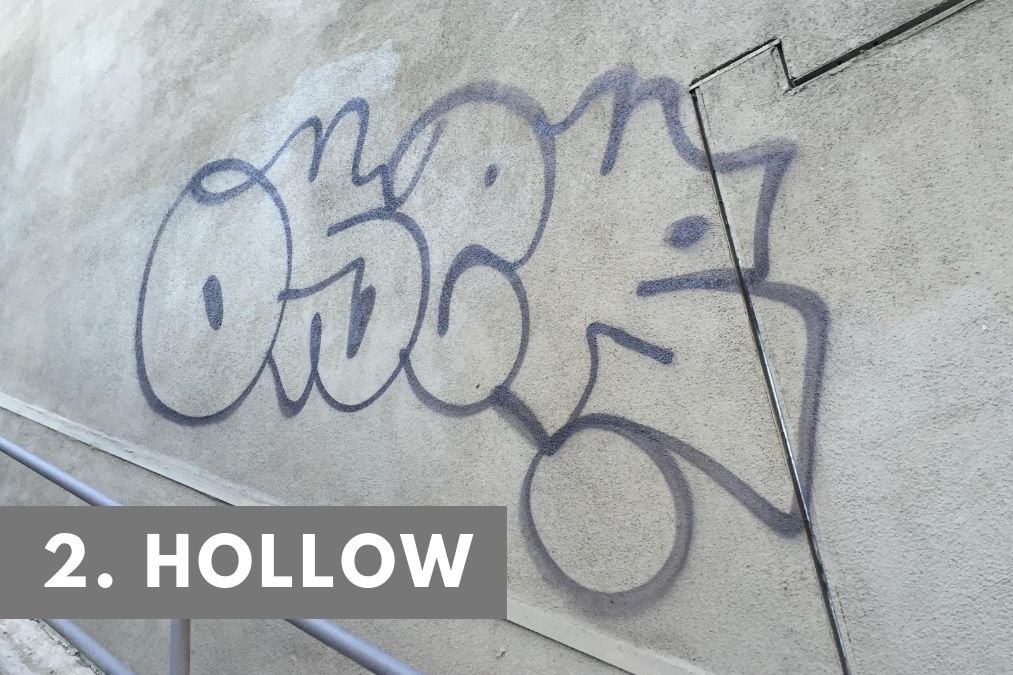
#3 THE THROW-UP
The next step is a Throw-Up. The bubble letters should be filled in with one colour and then outlined with a second, shadows can also be added. This causes the letters to be somewhat obscured or hard to read.
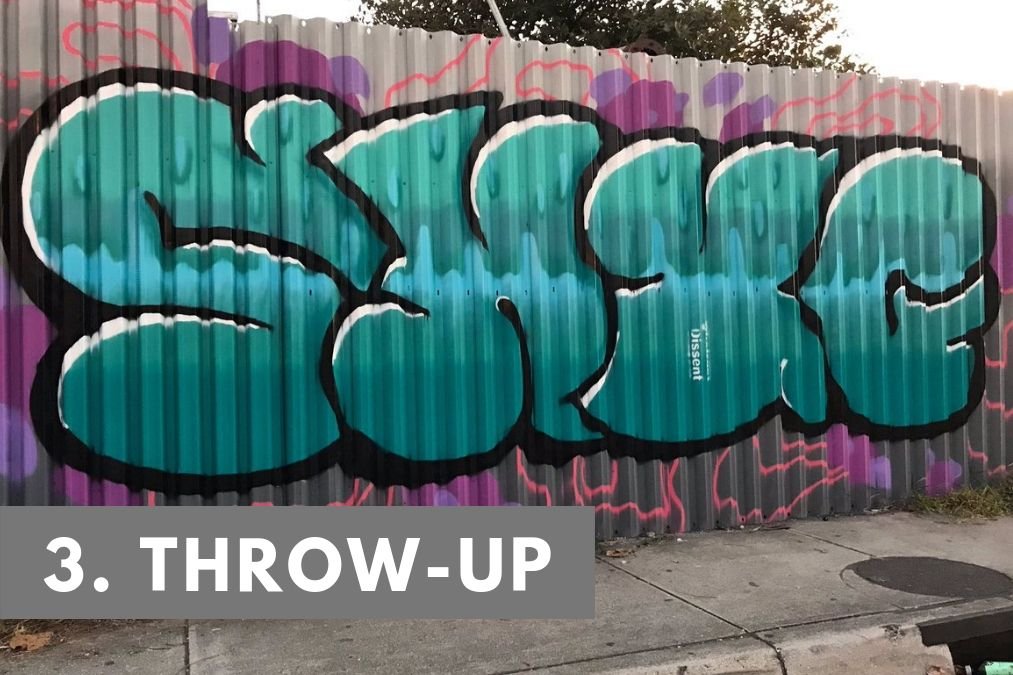
#4 THE STRAIGHT LETTER
The Straight Letter is all about readability, representing the word as clearly and legibly as possible. This allows for instant recognition of the artist’s signature word.
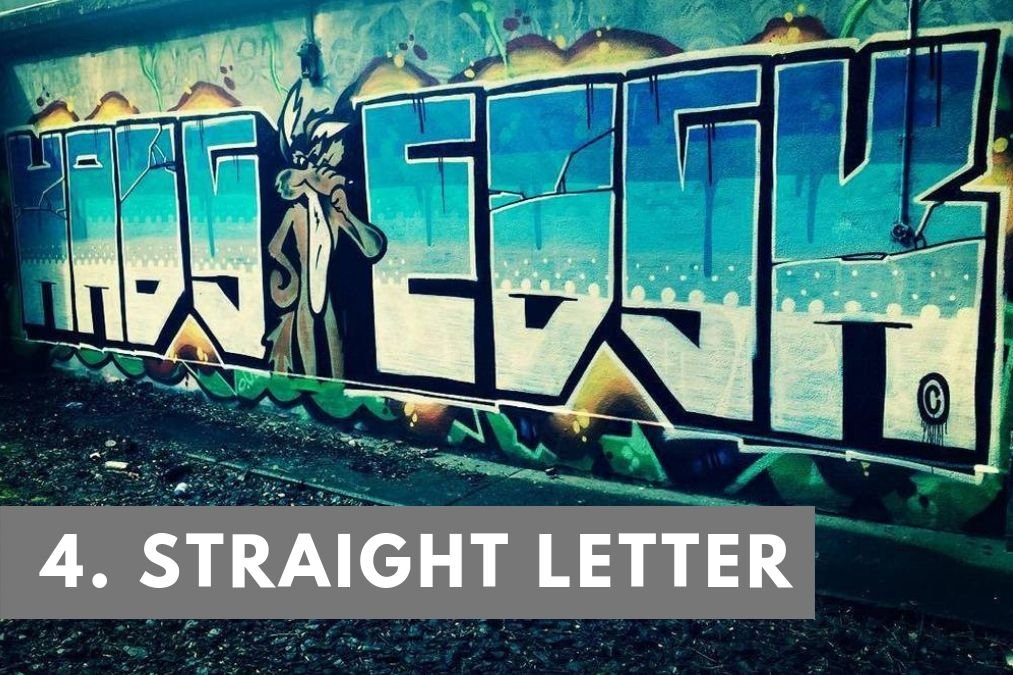
#5 THE PIECE
The Piece (short for masterpiece) is perhaps the most evolved form of graffiti, where nothing is off-limits.
With this, artists can let loose in representing their word in as many colours, connections, effects, shadows, characters and add-ons as they want.
Pieces can be simple and readable or super detailed and unrecognizable as letters. The more detailed pieces are usually considered to be better although I do find this is quite subjective.

So there you have it, a quick load down on the evolution of graffiti, from tags to masterpieces. I know a lot of people see Tags and Hollows as vandalism, but graffiti artists need to start practising somewhere.
I spoke to a UK graffiti artist in Feb 2019 and he told me it took him 10 years to perfect his craft and move from wildstyle (elaborate text designs) to full scale murals.
Maybe understanding the various steps in developing this craft gives you a little more grace for all the Tags and Hollows scattered on the streets.
If you enjoyed this Check out our YouTube video on legendary street artist Shepard Fairey.

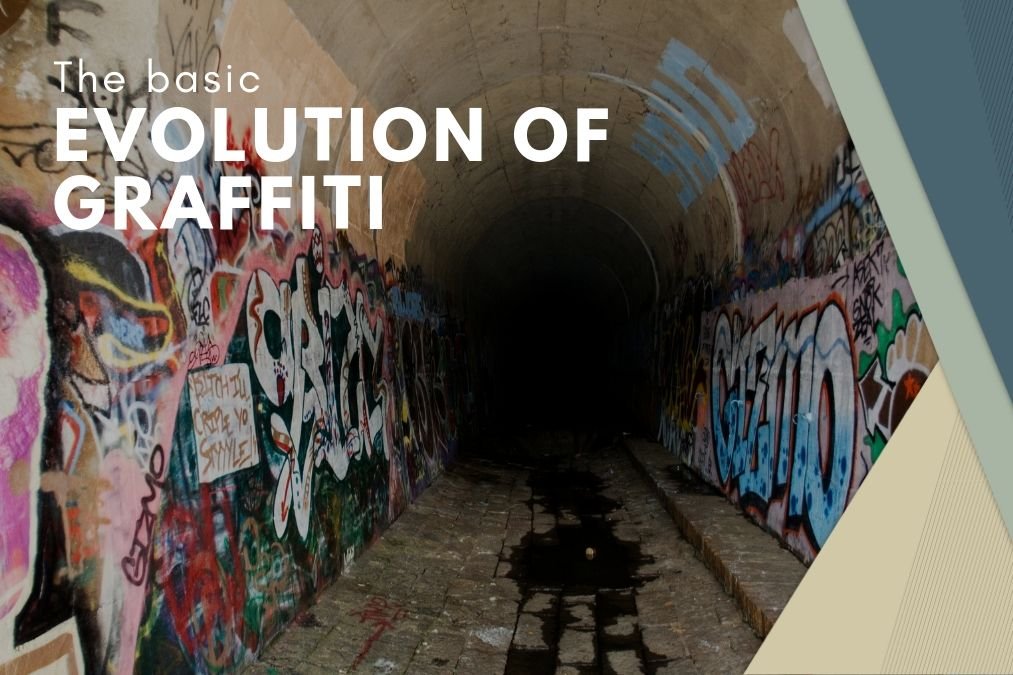
Pingback: Essential things to know about Graffiti and Street Art Lingo: 24 terms explained - Lillian Gray - Art School